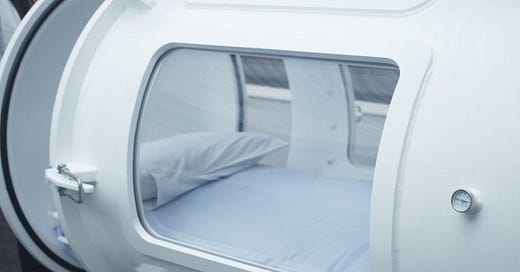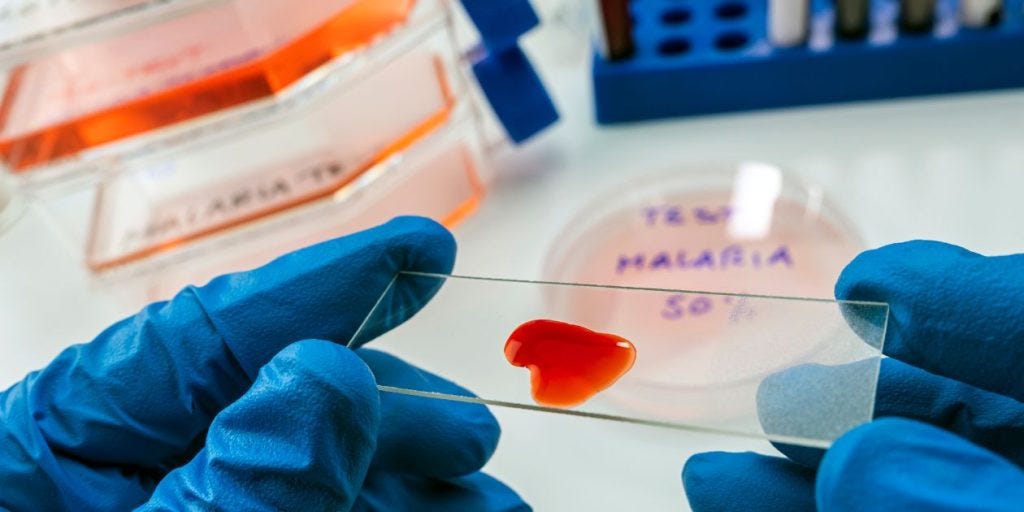5 Reasons to Think Twice About Hyperbaric Oxygen Therapy
Thinking about trying Hyperbaric Oxygen Therapy? Here are 5 situations where HBOT may not be the best fit.
Hyperbaric oxygen therapy is being touted as a panacea, and the research is building up on how it is able to treat different diseases, improve brain function, and even extend lifespan!
Even amidst the hype around HBOT, it is prudent to consider situations where it could be dangerous to implement this form of treatment.
I want to take this moment to discuss five situations where hyperbaric oxygen therapy might not be the best choice, especially if you have certain lung conditions.
Who Am I?
My name is Dr. Mark Chern and I am the author of this article. In this past year, I have been researching potential interventions for improving brain function as it relates to dementia and Alzheimer’s disease.
One of the interventions I have been exploring is hyperbaric oxygen therapy, which I have been experiencing and documenting in my website, reversebrainage.com.
I use a hard case hyperbaric oxygen chamber at a pressure of 2.0 ATA. This is akin to placing myself 10 meters (or 33 feet) underwater — and then breathing in pure oxygen.
Read on as we list out the 5 situations where you want to really consider before embarking on Hyperbaric Oxygen Therapy (HBOT).
1. Emphysema
If you have mild to moderate emphysema, you might see some benefits from HBOT. But if your condition is severe, especially if you retain carbon dioxide, HBOT could actually be risky. This therapy can lead to oxygen toxicity in severe cases. Before considering HBOT, it’s crucial to have a chat with your pulmonologist to weigh the risks and benefits.
2. Chronic Obstructive Pulmonary Disease (COPD)
Just like with emphysema, people with mild to moderate COPD might find HBOT helpful. However, if you have significant heart failure, especially with an ejection fraction below 25%, you need to proceed with caution. It’s really important to get evaluated by a healthcare professional to ensure that the benefits outweigh the risks for you.
3. Post-COVID Complications
HBOT has been a game-changer for many recovering from COVID-19, especially for those dealing with long-haul symptoms. However, if you have lung damage, like alveolar cysts that could lead to a pneumothorax, HBOT might not be safe for you. A chest X-ray is a good idea if you’re experiencing any breathing difficulties, just to make sure it’s safe to go ahead with the therapy.
4. Cancer
HBOT has shown promise for cancer patients, especially in reducing side effects from treatments like radiation and chemotherapy. But there’s a catch—certain chemotherapy drugs can interact with HBOT, increasing oxidative stress. If you’re undergoing cancer treatment, it’s essential to have your healthcare providers coordinate your care to ensure that HBOT is safe for you.
5. Blood Disorders
If you have conditions like spherocytosis or sickle cell disease, HBOT could be a bit tricky. While the increased oxygen levels can be beneficial, the pressure during therapy could negatively affect your red blood cells. It’s best to consult with a hematologist to make sure HBOT is a safe option for you.
Also read: Can Hyperbaric Oxygen Therapy Cure Traumatic Brain Injury (TBI)?
Absolute Contraindications for HBOT
1. Inability to Equalize Ear Pressure
If you struggle to equalize ear pressure because of conditions like ear infections, wax buildup, or scar tissue, HBOT might not be safe for you. This could lead to severe pain during treatment.
This is also why having a short first session is important, because you may only know there is an issue with equalizing when you're in there.
2. Pneumothorax
A pneumothorax, or collapsed lung, makes it impossible to properly equalize air pressure in your lungs during HBOT, which could result in intense chest pain. If you have this condition, HBOT is not recommended unless it’s an emergency situation, like a severe diving accident.
Also read: Can Hyperbaric Oxygen Therapy Cure PTSD?
Wrapping Up
Even though I’m just 10 hours into my hyperbaric oxygen journey, it’s been a remarkable journey of discovery.
I have gradually increased the pressure from 1.5 ATA to 1.8 ATA and will be moving next to 2.0 ATA of pressure.
So far, nothing life-threatening, but I did have some side effects, as elucidated in the video below!
It is important to remember that this therapy isn’t suitable for everyone, particularly those with specific lung conditions or other health concerns.
Before considering HBOT, I strongly encourage you to consult with your healthcare provider to make sure it’s the right choice for you.
For those who can safely undergo the treatment, the benefits can be truly transformative. As always, your health and safety come first, so be sure to make informed decisions and take care of yourself.
I hope you benefit from my sharing, even as you explore options for improving your health!
FAQs
1. What is HBOT therapy good for?
HBOT therapy is effective for a variety of conditions. It enhances wound healing, particularly for chronic wounds such as diabetic ulcers and non-healing surgical wounds. Additionally, it improves brain function and cognitive abilities, making it beneficial for conditions like traumatic brain injury and stroke. HBOT also aids in athletic recovery by reducing muscle fatigue and speeding up recovery time after intense workouts. It treats decompression sickness and air embolism in divers. Furthermore, it alleviates symptoms of chronic illnesses such as fibromyalgia and multiple sclerosis. Finally, it supports the healing of radiation injuries on the skin and aids in treating stubborn infections by increasing oxygen levels in the blood.
2. What is the process of HBOT therapy?
The process of HBOT therapy involves several steps. First, the patient is prepared by removing jewelry, watches, and electronic devices, and changing into a 100% cotton gown. The patient then enters a specially designed, pressurized chamber where they breathe 100% pure, medical-grade oxygen. The technician maintains visual and voice contact with the patient throughout the session. Each session typically lasts between 90 minutes and two hours, with multiple sessions required for optimal results (20-40 treatments over four to six weeks). After the session, the technician checks the patient's vital signs, and the patient is free to resume their day without any recovery time.
3. What is the downside of hyperbaric oxygen therapy?
While HBOT is a beneficial treatment, there are some downsides to consider. The cost of HBOT can be expensive, especially if it is not covered by insurance. Additionally, the treatment requires a significant time commitment, as multiple sessions are often necessary. There are also contraindications; HBOT is not suitable for everyone, particularly those with certain medical conditions such as lung disease or recent eye surgery. Although rare, there are potential risks such as middle ear problems and seizures in susceptible individuals.
4. Can you do HBOT daily?
Daily HBOT is generally not recommended. The frequency of treatment sessions depends on the condition being treated and the individual's response to the therapy. Typically, multiple sessions over several weeks are required to achieve optimal results.
5. Is HBOT good for the brain?
Yes, HBOT is beneficial for the brain. It enhances brain function by increasing oxygen levels, reducing inflammation, and promoting the growth of new brain cells. This makes it a useful tool for treating conditions such as traumatic brain injury, stroke, and cerebral palsy.









